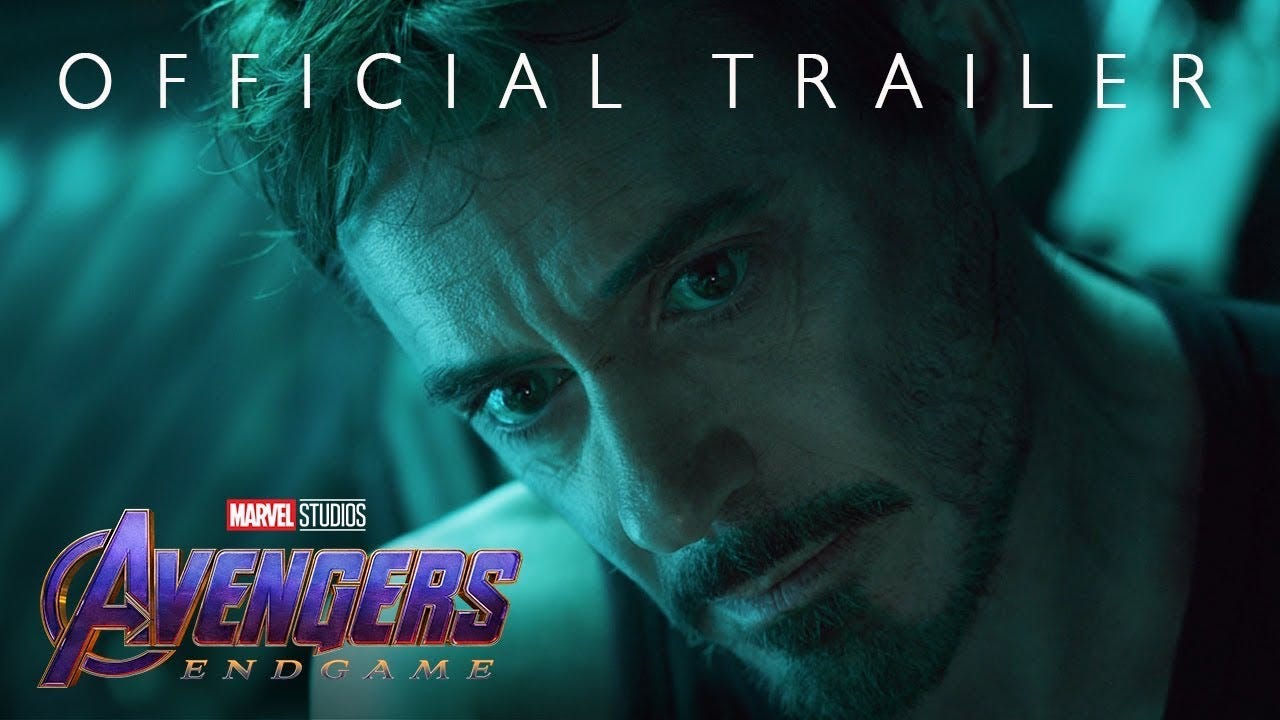The Death of the Tease
When movie trailers become SparkNotes, the mystery dies before the opening credits roll.
I’m officially done with movie trailers.
When exactly did trailers stop being, well. . . trailers? Weren’t they supposed to tease? Whet your appetite? Keep you guessing just enough so you’d cough up $20 for a movie ticket and another $625 for a small popcorn and drink combo (and a side of financial regret?)
Now, trailers aren’t teasing. They’re summarizing. They’re SparkNotes with dramatic music.
Case in point: I went to see Mickey 17 recently (which, for the record, I wouldn’t recommend to my staunchest enemy. I’d rather just send them a glitter bomb).
Before the movie, I sat through what felt like 47 trailers. One of them was for that new Rami Malek film, The Amateur. And I kid you not, they showed every single plot point in that two-minute preview. Every. Single. One.
My son and I looked at each other like, No way. That can’t be it. They’re holding back something. Right?
Spoiler alert: they weren’t.
He ended up seeing it with friends later, and when he came home I asked, Was the trailer just a condensed version of the film? And without even blinking, he said, Yes.
So I started digging. How did we get from tantalizing hints to full-blown recaps?
Turns out, the history of trailers is actually wild. And kind of poetic.
A Quick History of the Movie Trailer
What you’re about to read is the result of hours spent binge-reading online archives, film school essays, and academic studies on movie marketing because, honestly, I had no idea what I was talking about before I dove in. But after a deep rabbit hole, here’s what I dug up.
Ever wonder why it’s called a trailer when it plays before the movie? Shouldn’t it be called a preview?
Well, once upon a time, it actually did trail the movie.
The first trailer dates back to 1913, when Broadway producer and publicist Nils Granlund filmed rehearsal footage of an upcoming musical called The Pleasure Seekers. It played after feature films at the Marcus Loew theater group’s Winter Garden Theatre in New York City. That’s how the name “trailer” stuck—even though the format changed.
Back then, movie theaters weren’t just places to watch a film. They were social hubs. People lingered. Chatted. Hung around after the movie. So sticking a trailer at the end made sense.
But after the Great Depression hit in 1929 and theaters became more no-frills and cost-conscious, audiences didn’t stick around anymore. So studios flipped the format: trailers got bumped before the movie. But the name never changed.
The Boom Years (1920s–1950s):
Granlund’s idea caught fire. By the 1920s, trailers were everywhere. Newspapers ran preview cards. A company called the National Screen Service (NSS) was launched in 1920 solely to churn them out. They handled everything trailers, posters, stills. The full studio marketing machine.
Early trailers weren’t big on footage though. They were all about written spectacle. flashing across the screen while violins soared. Dramatic title cards, swelling music, and exclamation points galore. Think: “A romantic triumph you’ll never forget!”
But all that changed in 1960, when English filmmaker Alfred Hitchcock flipped the script. Instead of showing scenes, he appeared in the trailer for Psycho himself, giving viewers a cheeky, suspense-filled tour of the film’s set. He didn’t give much away—but just enough. It was smart. It was unexpected. And it was a total game changer.
Enter the Voice of God (1970s–1980s):
Then came the golden age of voice-overs. You know the sound: “In a world where one man must fight to survive…” That gravelly voice belonged to Don LaFontaine, who basically was the sound of movie trailers for two decades.
These trailers teased just enough to hook you, but never spoiled the plot. They left you wanting more.
Then Came the Internet (1990s–2000s):
In 1999, however, something shifted. The trailer for The Phantom Menace dropped online and people lost their minds. Downloads spiked. Lines formed outside theaters. . . just to watch a trailer before another film.
Studios took note: trailers are money-making machines.
And now? Here we are.
Trailers are practically short films—designed by marketing teams and tested by algorithms. They don’t just tease, they tell. Sometimes, a little too much.
Marvel’s Endgame trailer pulled in 289 million views in its first 24 hours across YouTube, Facebook, and Twitter.
Bottom line: trailers aren’t just ads anymore. They are the event.
And maybe that’s the problem.
If your entire $200 million film can be distilled into a two-minute trailer. . . maybe you didn’t need the extra 2+ hours. Maybe you didn’t need the budget. Maybe you just needed a YouTube short and a decent editor.
Whatever happened to letting the movie speak?
I miss being surprised. I miss wondering. I miss that little tingle of ‘wait, what’s this going to be?’
Have you seen a trailer that ruined a movie for you? Or one that somehow made you more curious without giving everything away? Drop it in the comments.
And if you liked this piece, consider tipping the writer’s popcorn fund.







How interesting! It’s so true, I’m always complaining to my hubby that trailers now are spoiling the films by showing all the best bits, leaving nothing for surprise. And I never knew how the term trailers came about! Thanks for the explanation, you learn something new everyday don’t you! 👏
To your point, the only three trailers that got me genuinely hyped for the movie in the past few years were “Vice”, “The Batman” and “The Brutalist”. All of them unveiled limited parts of the movie but left me wanting more.
Crazy how bad trailers are these days.